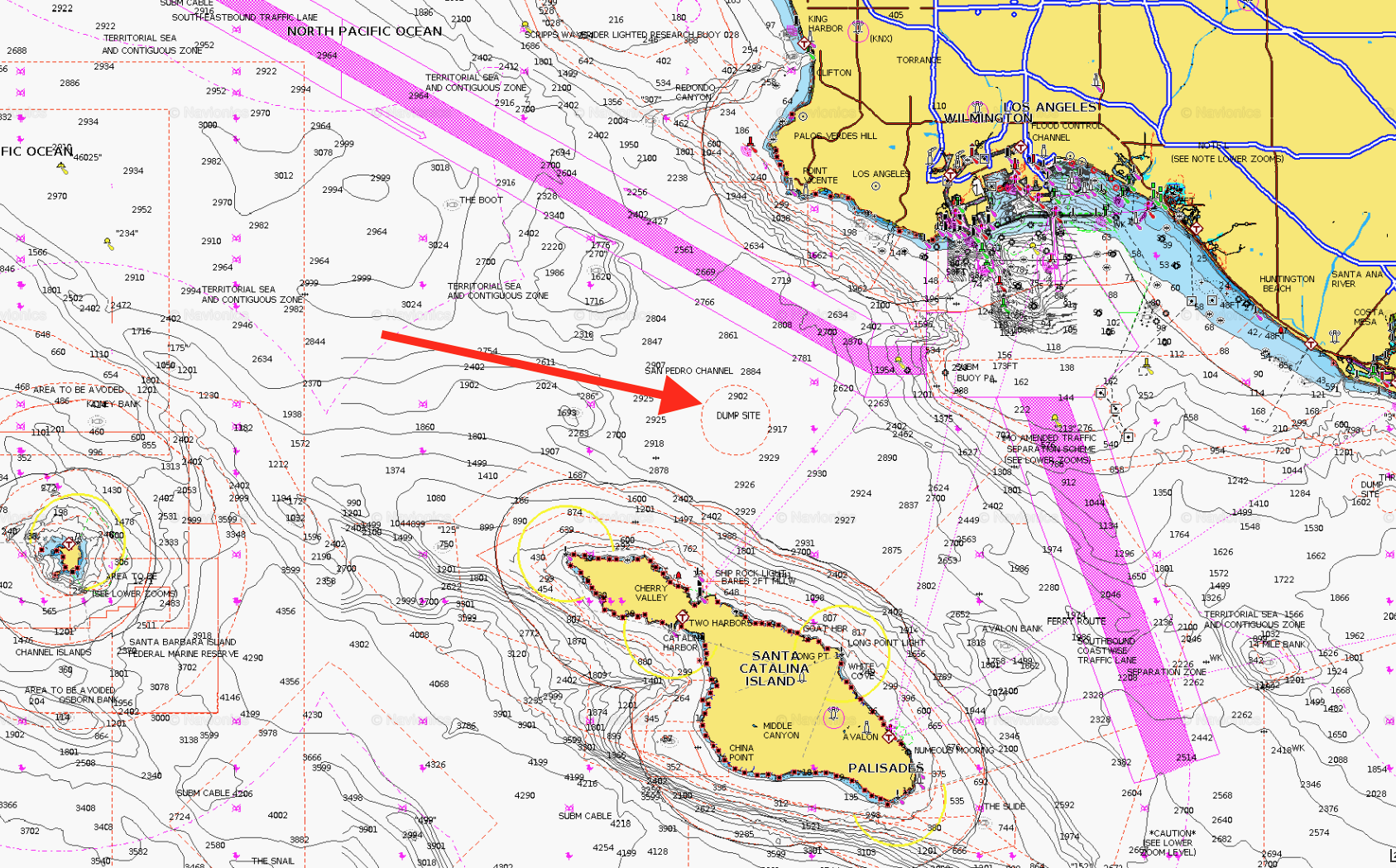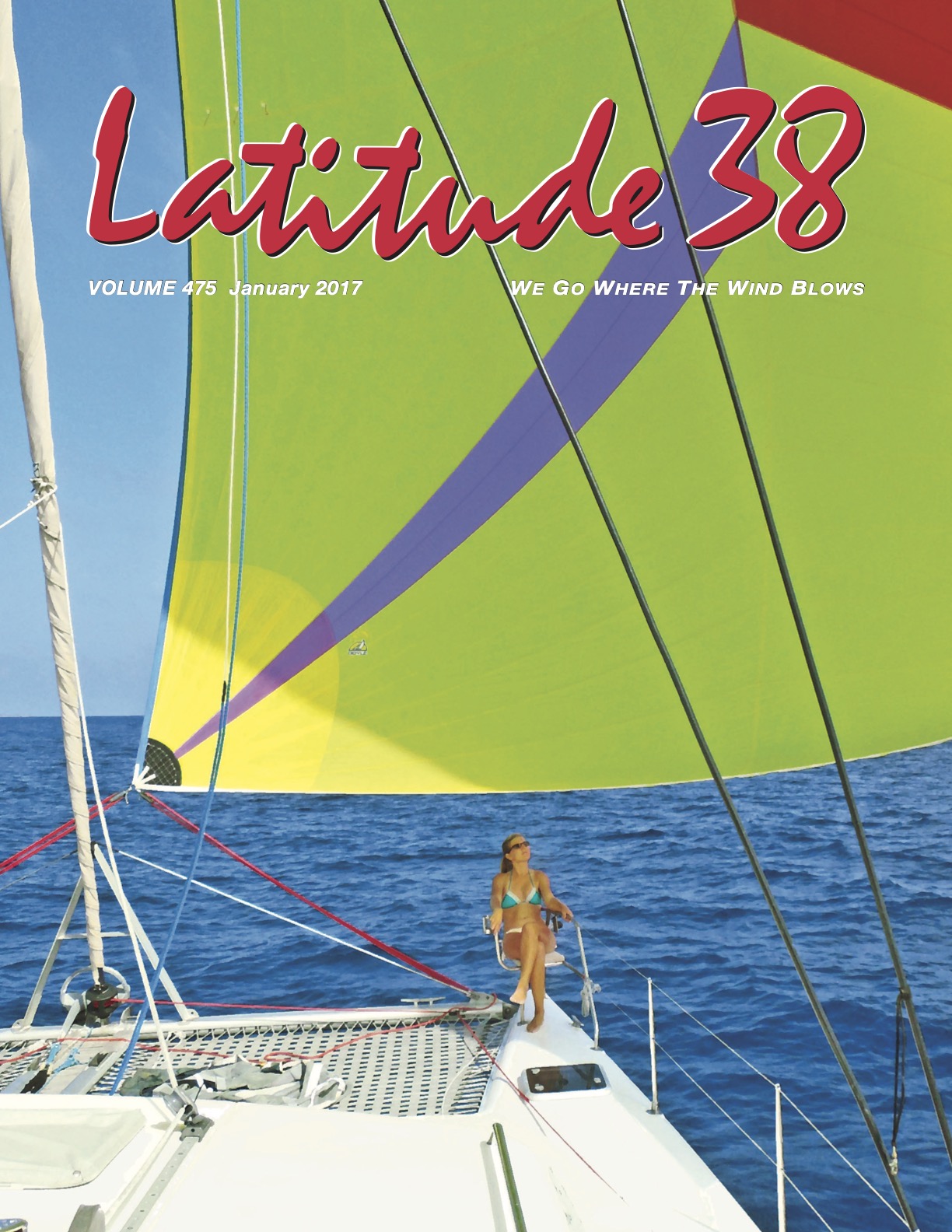
Baja Ha-Ha XXVII Opens For Registration at Noon on May 6
Grand Poobah Richard Spindler wrote to announce the opening of the 2021 Baja Ha-Ha:
Why sign-up right away? The earlier you sign up, the higher you are on the list to get a berth in Cabo San Lucas at the end of the Ha-Ha.It may not seem like a big deal now, but for a lot of folks getting a berth after nine days ‘out there’ is an attractive proposition. Particularly for women.
The Ha-Ha, as you probably know, is the 750-mile cruisers’ rally from San Diego to Cabo San Lucas that will start on November 1. Since it is a cruisers’ rally, participants can use their engine whenever they want, be it for safety or convenience. There are R&R stops along the way at Turtle Bay and Bahia Santa Maria, as well as social events before, during and after the fleet reaches Cabo. Boats must be 27 feet or longer and have been designed, built and maintained for offshore sailing. There must be at least two crew. There are daily roll calls and weather forecasts.

The 63-ft catamaran Profligate will be the mothership for the 24th year. Collectively here crew will have done the coast of Baja over 150 times. For the Notice of Rally, further details, and to sign-up, visit www.baja-haha.com.

Over 10,000 sailors have done the Ha-Ha, and speaking as the Grand Poobah of the 26 previous Ha-Ha’s, I hope you’ll join us.


What Is the State of the Ocean?
Latitude Nation — In preparation for World Oceans Day on June 8, we’re taking an unofficial survey.
What is the state of the world’s oceans?
In your travels, have you noticed more trash in the water, or has the water been getting cleaner? Have you seen more sealife in recent years, or is it diminishing? Have storm seasons been getting longer and more severe in your part of the world?

We’re also curious about everything adjacent to the ocean. Have you noticed any differences in ports and harbors around the world? Are developing nations starting to clean up their waterways, or do you see trash in the water? Have environmental regulations changed in countries you’ve visited with regard to the prevention of invasive species, dumping of gray water, etc.?
We’re also curious if you’ve noticed changes in your local waters. Do you see less trash in the water than you did 10, 20 or 30 years ago? Do you see more whales, seals and dolphins in the water than you have previously? Have you noticed any significant changes in local weather trends over the years — more (or less) fog, more (or less) wind, more (or fewer) sweltering-hot days?

Please comment below, or email us here.
Enjoy Downwind Sailing with Walder Boom Brake
The innovative Walder boom brake — active safety at sea www.boom-brake-walder.com
Paul Cayard Giving Wednesday Luncheon Presentation Today
Enjoy lunch in your home office today while watching a presentation by US Sailing’s new Olympic Executive Director Paul Cayard, hosted by the St. Francis Yacht Club Wednesday Yachting Luncheon. Paul has been named to lead the US Sailing team and organization just four months ahead of this year’s summer Olympic games in Japan, but with a longer runway before summer Olympic sailing returns to Long Beach in 2028.

The Games will begin on July 25, 2021, in Enoshima, Japan. With the whole world watching, America’s reputation will be on the line. Ask Paul, “Why accept such a giant challenge?” and he answers, “Being an American and part of a movement to support American sailors taking their rightful place amongst world class competition is my strongest motivation.”
Paul is a two-time Olympian, a Whitbread Round the World Race winner, seven-time world champion and seven-time America’s Cup competitor, and is well suited for the challenge. After decades of managing multimillion-dollar design, engineering, building and racing programs, with hundreds of employees, Paul has the temperament and skills to direct US Olympic Sailing staff, technology, and the brightest young sailors in the biggest regatta of their lives.
To view today’s lunchtime presentation click here. To read more about Paul’s plans for the Olympic team, see Michelle Slade’s story in the current Latitude 38.
25,000 Barrels of DDT Discovered Between Long Beach and Catalina Island
While sailing up the coast from Long Beach to San Francisco recently, we’d been looking at the chart below as we navigated our way along coastal Southern California. However, we never noticed the small type on the chart saying ‘Dump Site,’ about 12 miles offshore from Long Beach. Not many people appear to have paid much attention to it until 2021, when David Valentine, a professor of biology and earth science at the University of California Santa Barbara, took some underwater photos. They turned out to show leaking barrels with exceptionally high concentrations of DDT and lots of other chemical waste.

Apparently, Montrose Chemical Corporation in Los Angeles was the largest producer of DDT in the world when Rachel Carson’s book Silent Spring came out and people began to look at these ‘miracle’ chemicals a bit differently. DDT was eventually banned in the ’70s — a time when people thought 3,000-foot-deep trenches in the ocean were a great place to get rid of stuff too toxic for life on land.

The recent expedition, by a group of scientists led by the Scripps Institution of Oceanography, has now completed a mapping of the dumping zone and found over 25,000 leaking barrels, as well as quite a few empty Jose Cuervo and Corona bottles. Of course we know this huge, toxic site remains just the tip of the iceberg when it comes to industrial waste that people have been attempting to hide in the oceans for decades.
On your next sail over to Catalina you can read the full story in the New York Times here. While the chart shows a clearly marked ‘Dump Site’ circle, investigators say they’ve discovered many more toxic barrels outside previously documented dumping sites. We doubt many people find this surprising. It can be hard to land your toxic waste in the circle as you push it over the side while bobbing around on the surface. For now, it remains 3,000 feet down and miles from the coast and Catalina, but that is not much comfort to the ocean and the sealife that calls this area home.
The good news is that the use of the ocean as a dumping ground has been dramatically curtailed, and discoveries such as this continue to shift our way of thinking and the opportunities we have to improve the health of the oceans.
San Francisco Sailors Conduct Ocean Rescue in New Zealand
Last month, a couple were sailing off the coast of Northland, New Zealand, when they responded to a mayday call and successfully rescued a man who had fallen from his jet ski. The couple, originally from San Francisco, were Alyssa and Lewis Allen, two sailors who have often appeared in Latitude 38.

The pair were sailing from Kawau Island to Tutukaka when they heard the distress call on their radio. As they were only about three miles away, they set their course to the coordinates and pushed through the strong winds and choppy seas.
Upon reaching the stricken man, Alyssa soon realized they couldn’t bring their boat close enough and instead jumped into the cold water.
“He had tied himself to the jet ski, but he was in the water,” Alyssa told the Auckland news site Stuff.
“I yelled out to him to ask if he was OK, and he said he was cold, and he couldn’t really move. I could see he was having a hard enough time keeping his head above the water.”
Alyssa swam against the current to bring the man back to their boat, where the couple then faced the difficult task of getting him on board. Lewis then notified the Northland Emergency Services Trust, which sent a helicopter and launched a rescue swimmer to assist. The rescued man was now hypothermic and in a serious condition, and was hoisted into the helicopter to be taken to a hospital.

Afterwards Alyssa and Lewis said they had “no regrets about risking their lives.”
“He was having a hard enough time keeping his head above the water. He was so weak, and I just imagined if it was my father or my family, and there was no second thought.
“Every second counts.”
Our last previous news of Alyssa and Lewis was in 2017, when they were cruising the South Pacific aboard their salvaged Voyager 430 catamaran, Quixotic.
Oh, and did we mention this? Alyssa was on the cover of the January 2017 issue of Latitude 38.

Happy International 5O5 (5/05) Day
The International 5O5 Association has adopted May 5 (5/05) as International 5O5 Day. According to the association, the 65-year-old racing dinghy “has maintained its position as the most successful two-person sailing boat on the planet. Enormously popular amongst Olympians, world champions and enthusiastic weekend sailors alike, the Class will use the 5th May to celebrate the 505 Community that spans over 17 countries and over six decades of racing around the world.”

Why does the 5O5 remain so successful? It’s a “most elegant, beautiful boat,” according to Harold Cudmore, Olympian and multiple world champion. “No other boat is able to give one such pleasure,” said Danish legend Paul Elvstrom, Olympian and multiple world champion. “It has awesome international racing,” said Olympian Penny Clark. “It’s just so much fun,” said 70-year-old Earl Alexander.
Developed in the mid-1950s, the 16.5-ft 5O5 incorporates a lightweight hull design with a powerful sail plan (with spinnaker) and trapeze. The dinghy can plane in 10 knots of wind. The sailors can make almost every adjustment while they’re racing. Brit John Westell designed the boat. The rules for the hull shape and sail plan have not been changed.

The class’s World Championship was canceled in 2020. Royal Bermuda Yacht Club will host the 2021 Worlds on October 26-November 5.

